Creating a garden that is both sustainable and visually appealing is more than just planting flowers or greenery. A sustainable garden is designed to work with nature rather than against it. It conserves resources, encourages biodiversity, and provides long-term enjoyment. By thoughtfully planning and incorporating eco-friendly practices, you can create a garden that is resilient, low-maintenance, and still breathtaking.
Sustainability in gardening isn’t about sacrificing beauty. With the right strategies, you can have a garden that looks amazing year-round while supporting the environment.
Understanding Sustainable Gardening
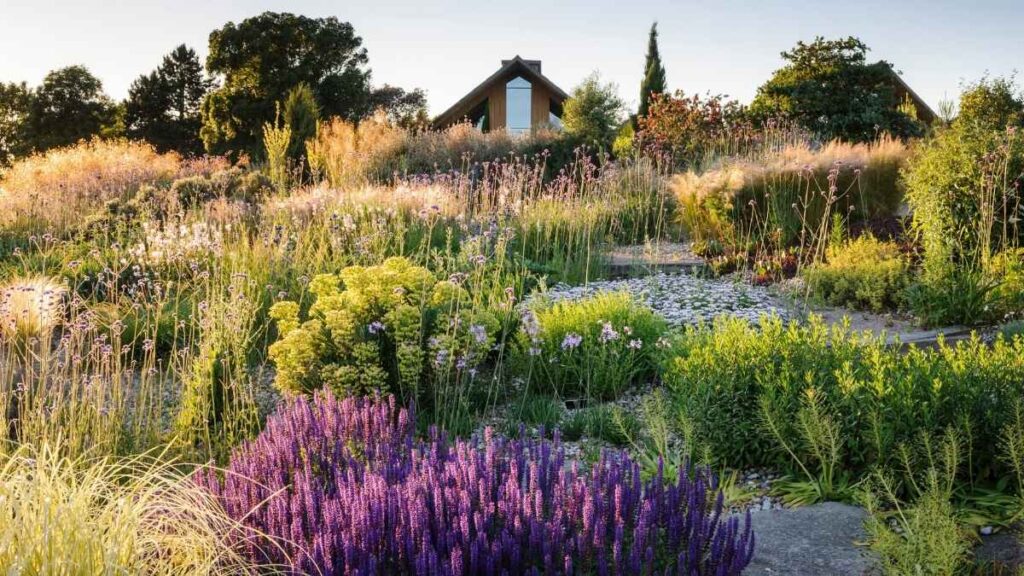
Before planting anything, take time to observe your garden. Notice how sunlight moves throughout the day, where shadows fall, and which areas are exposed to wind. Identify spots where water tends to collect and areas that drain quickly.
Understanding these conditions allows you to choose plants that thrive naturally, reducing the need for artificial fertilizers, excessive watering, or constant maintenance.
Soil is another critical factor. Healthy soil supports plant growth, retains water, and provides essential nutrients. You can improve your soil’s health by:
- Adding organic compost to enrich nutrients
- Using mulch to retain moisture and regulate temperature
- Incorporating natural soil amendments like greensand, bone meal, or rock dust
Testing your soil for pH and nutrient levels helps you know what your plants truly need. This proactive step saves resources and ensures healthier growth.
Choose Native and Drought-Tolerant Plants
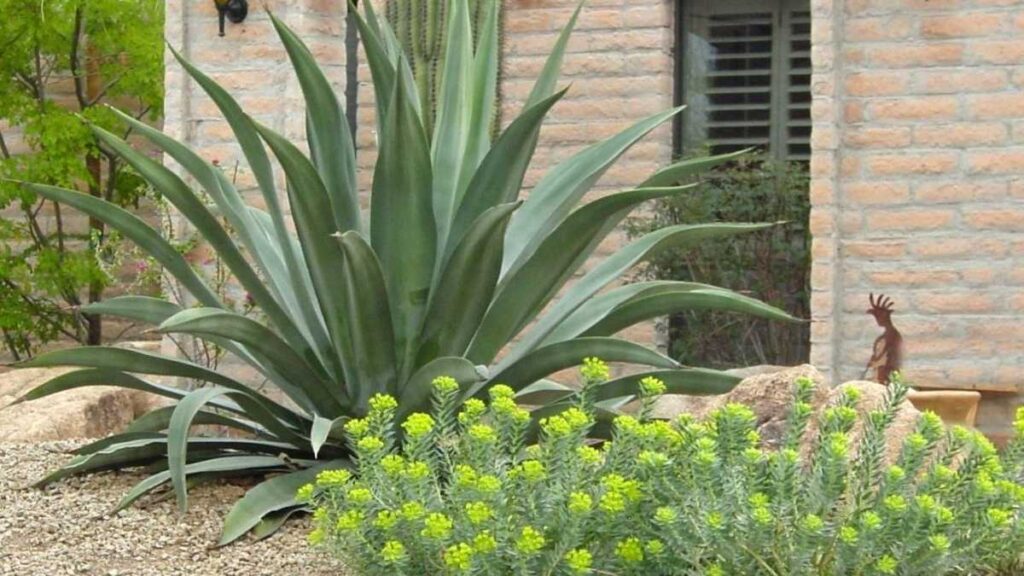
Plant selection is the cornerstone of a sustainable garden. Native plants are naturally adapted to local climates and soils. They require less water, fewer fertilizers, and minimal care, making them ideal for low-maintenance gardening. Native plants also support local wildlife by providing food and shelter.
In addition to natives, drought-tolerant plants are excellent for conserving water. They survive dry periods and reduce irrigation needs. Some practical options include:
- Lavender
- Sage
- Ornamental grasses
- Succulents
- Yarrow and sedum
Mixing native and drought-tolerant plants creates a resilient garden that remains lush and vibrant across seasons. It also helps prevent soil erosion, encourages pollinators, and reduces the carbon footprint of garden maintenance.
Plan for Water Efficiency
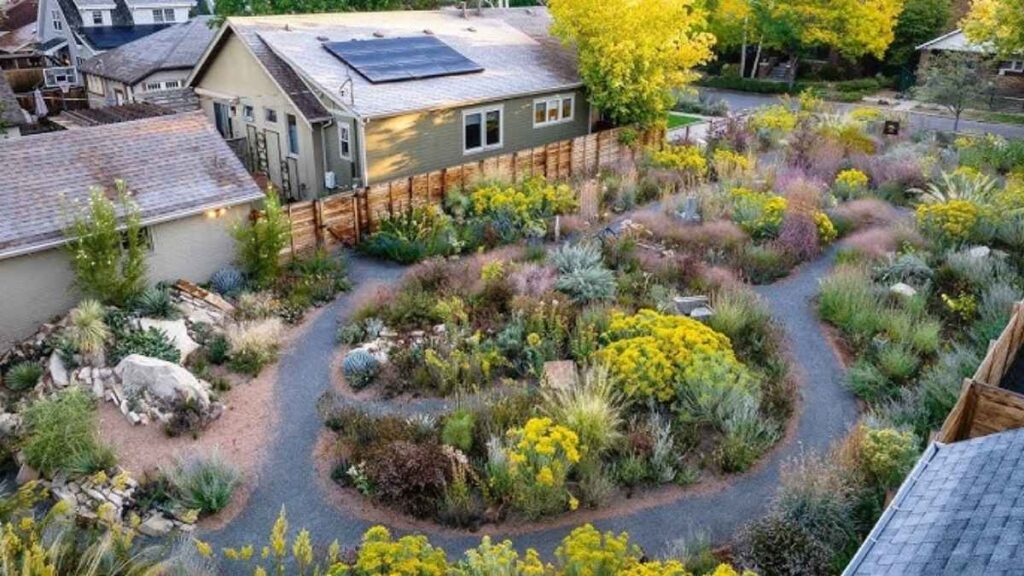
Water is one of the most critical resources in a garden, and sustainable gardens aim to use it wisely. Efficient watering methods include:
- Drip irrigation or soaker hoses: Deliver water directly to plant roots, minimizing evaporation
- Rainwater harvesting: Collect water in barrels or storage tanks for later use
- Mulching: Helps retain soil moisture, suppress weeds, and protect plant roots
Rain gardens are another creative way to manage water sustainably. They are designed to collect and filter rainwater naturally, reducing runoff while providing a habitat for wildlife.
In addition, grouping plants with similar water needs together ensures no resources are wasted. This practice, known as hydrozoning, makes irrigation more effective and efficient.
Encourage Biodiversity
A sustainable garden thrives when it supports a variety of life forms. Biodiversity improves soil health, attracts pollinators, and naturally controls pests.
Ways to encourage biodiversity include:
- Planting a range of flowering plants to attract bees, butterflies, and other pollinators
- Adding fruit trees, berry bushes, and shrubs to provide food for birds and small mammals
- Creating small habitats such as ponds, birdhouses, or insect hotels
Native plants, combined with diverse habitats, make your garden more resilient. A garden with a rich ecosystem requires fewer chemical interventions and is more enjoyable to watch as wildlife interacts with it naturally.
Use Sustainable Materials
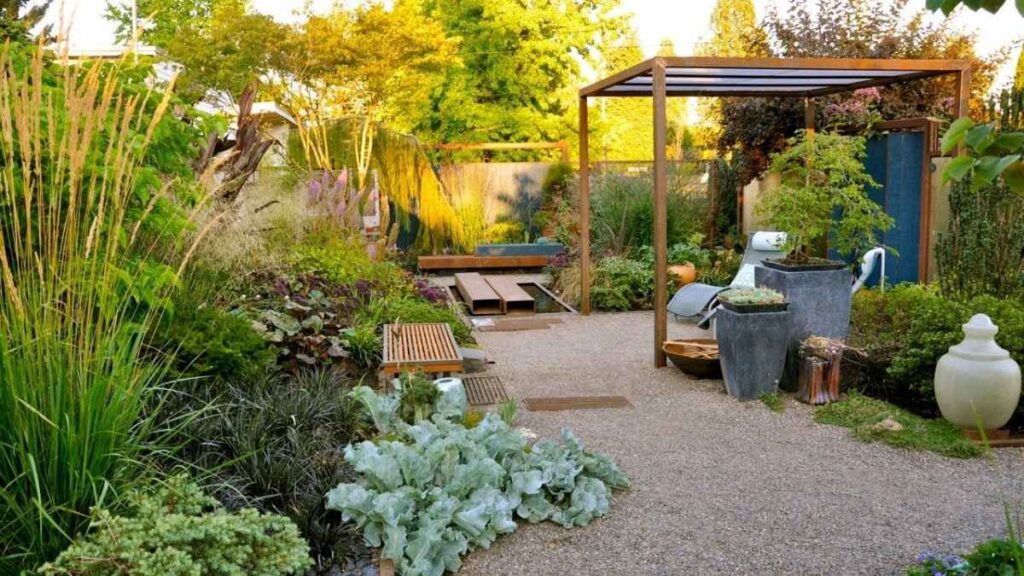
The materials you use for garden structures, paths, and furniture impact sustainability. Some eco-friendly options include:
- Reclaimed wood for raised beds or trellises
- Natural stone for paths and decorative features
- Recycled metal for sculptures, supports, or fencing
Avoid treated plastics and chemically processed materials, as they can harm the environment over time.
Composting is another essential practice for sustainability. A wooden or recycled-material compost bin can turn kitchen scraps and garden waste into nutrient-rich fertilizer. This reduces landfill waste and enhances soil fertility, creating a closed-loop system that benefits your garden.
Design for Year-Round Interest
Sustainable gardens should be designed to look appealing throughout the year. Seasonal variety ensures that there’s always something to enjoy, even in winter. Consider these design principles:
- Plant a mix of evergreen and deciduous plants to maintain structure year-round
- Layer plants by height and texture to create depth
- Incorporate natural features such as rocks, logs, or water elements for visual interest
- Include plants with varying bloom times for continuous color
Even a small garden can appear dynamic by combining ornamental grasses, shrubs, perennials, and seasonal bulbs. Using natural elements like driftwood, stones, or a small fountain adds texture and personality while remaining eco-friendly.
Reduce Chemical Use
Sustainable gardens thrive without heavy reliance on chemical fertilizers or pesticides. Chemicals can harm beneficial insects, degrade soil health, and contaminate water. Instead, consider:
- Using compost or organic fertilizers
- Implementing companion planting to repel pests naturally
- Encouraging beneficial insects like ladybugs, lacewings, and predatory beetles
Marigolds, basil, and nasturtiums are excellent examples of companion plants that deter unwanted pests while attracting pollinators. These methods keep your garden healthy while maintaining ecological balance.
Plan for Long-Term Maintenance
A sustainable garden is designed with longevity in mind. Low-maintenance choices save time, effort, and resources. Tips for long-term care include:
- Selecting perennials instead of annuals to reduce replanting
- Applying mulch to suppress weeds and retain moisture
- Regularly pruning and monitoring soil health to prevent overgrowth or disease
A garden designed for easy care allows you to enjoy its beauty without constant labor. Planning paths, raised beds, and irrigation systems thoughtfully can reduce effort and improve efficiency over time.
Integrate Edible and Useful Plants
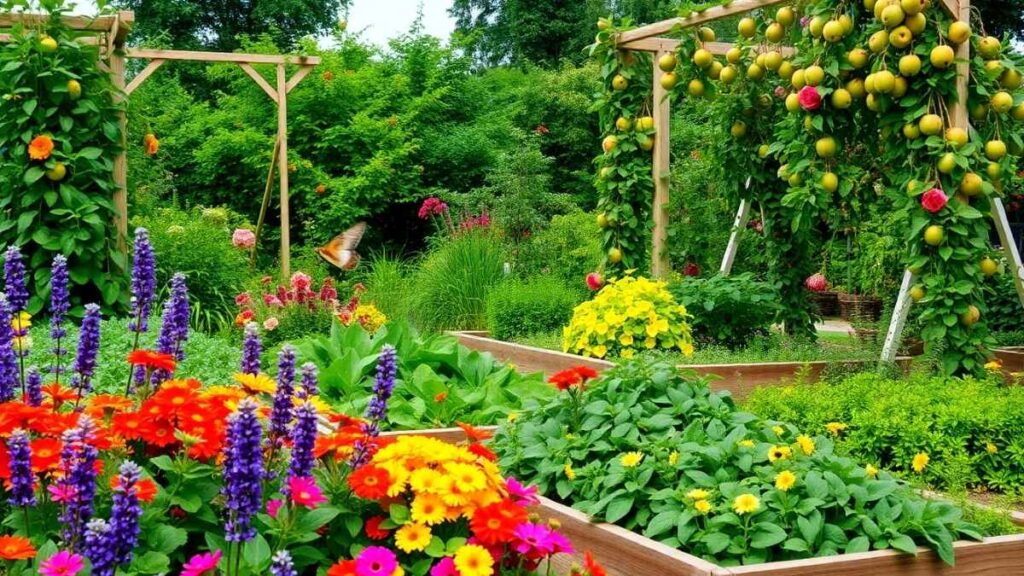
One way to enhance sustainability is by incorporating edible plants and herbs. This not only reduces your grocery footprint but also makes the garden functional and interactive. Consider:
- Fruit trees like apples, plums, or citrus
- Berry bushes such as raspberries and blueberries
- Herbs like basil, rosemary, mint, and thyme
- Vegetables suited to your climate, grown in raised beds or containers
Edible plants can be combined with ornamental ones for a garden that is both beautiful and productive. Companion planting can also improve yields while naturally deterring pests.
Create a Space That Reflects You
A sustainable garden should also be a personal sanctuary. Think about your lifestyle and how you want to use the space. Elements to consider include:
- Seating areas for relaxation, meditation, or social gatherings
- Pathways that guide movement and create a sense of exploration
- Focal points such as sculptures, water features, or a small pond
- Outdoor lighting using solar or low-energy options
By blending ecological principles with your personal preferences, you create a garden that is both environmentally responsible and uniquely yours.
Conclusion
Creating a sustainable garden is an investment in both beauty and the environment. By understanding your garden’s conditions, selecting native and drought-tolerant plants, conserving water, promoting biodiversity, and using sustainable materials, you can design a space that is visually stunning and eco-friendly.
A sustainable garden is a living ecosystem. It nurtures wildlife, enriches the soil, reduces resource use, and provides a peaceful retreat for you and your family. With thoughtful planning, creativity, and patience, anyone can create a garden that is both beautiful and kind to the planet.
Sustainable gardening is not a trend; it is a long-term approach that brings harmony between humans and nature. The effort you put into designing and maintaining your garden will pay off with a thriving, vibrant space that continues to evolve and inspire year after year.



